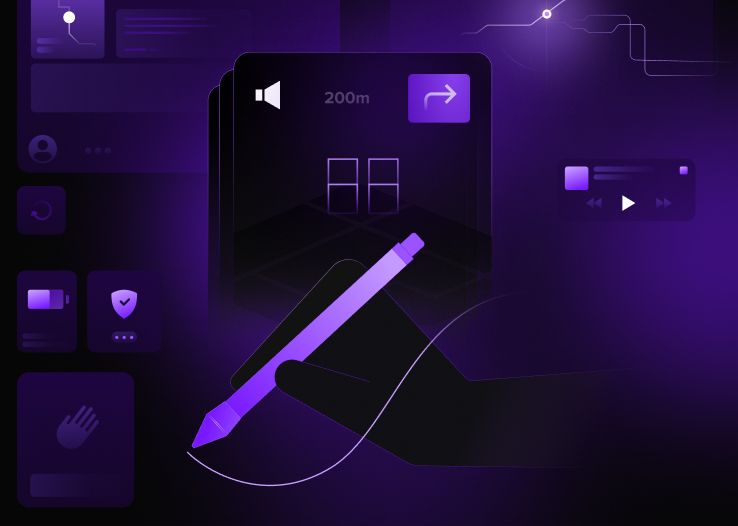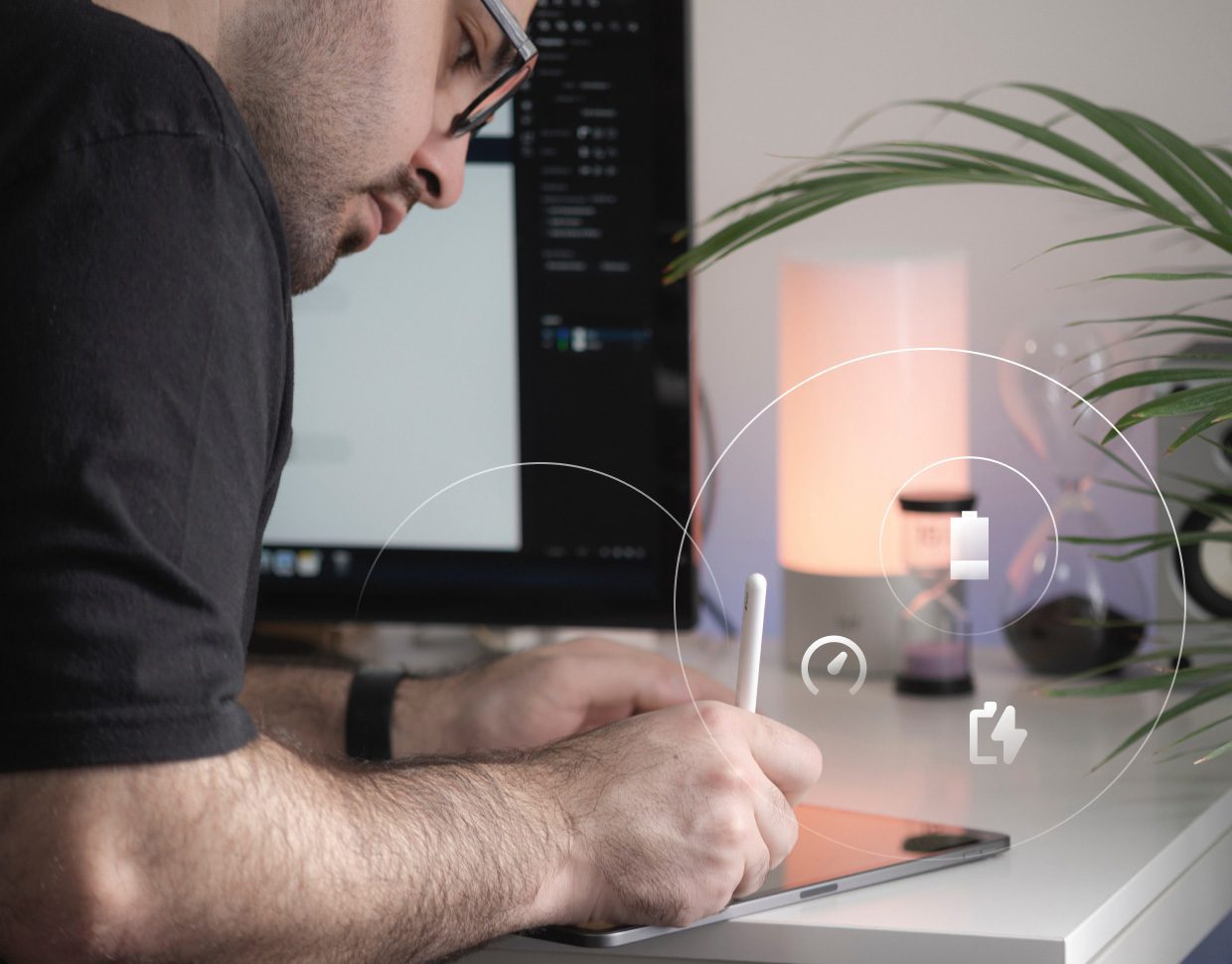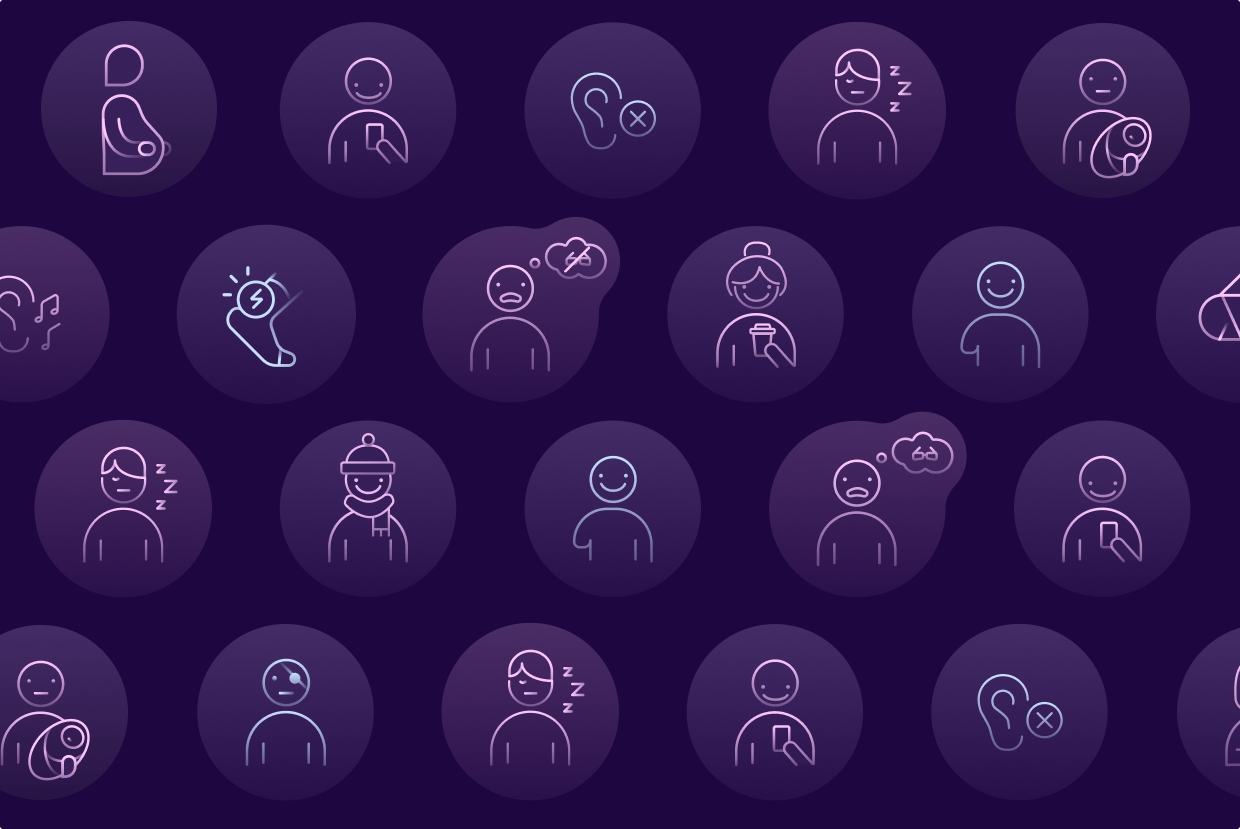Design Thinking isn’t just for designers. It’s a universal methodology that has transformed all the major industries, including FinTech and Healthcare because it provides the single biggest competitive advantage to any business. Don’t believe it? An analysis from 2005-2015 found the Standard & Poor’s 500, or S&P 500, companies that invested the most into design processes and management outpaced the rest of the index by 211 percent. Whether you’re a Fortune 500 company or a small social enterprise, a design approach is proven to bring long-term benefits to any operation.
At Star, we’ve spent years working with both large and small companies to drive innovation based on effective design methods. That’s why we put together a comprehensive guide that answers the most common questions out there on Design Thinking. More importantly, we want to share all the indispensable tools related to adopting and leveraging a design approach for innovation strategy and transformation in the enterprise ecosystem.
So, let’s get started.
What is a Design Thinking approach?
Simply put, Design Thinking is a human-centered approach to innovation. While there are many different interpretations, all Design Thinking follows a multi-step framework with a primary focus on empathy, problem identification and co-creating with key stakeholders.
Following the principles of Design Thinking is key to organizational transformation and modernization. More than just a customer-centered approach, this methodology is beneficial to all levels and functions in the enterprise — from customer service and supply chain to product development, marketing and finance. It helps to create smarter, secure and more successful organizations while revolutionizing the customer experience.
One example that shows the collaborative benefits of Design Thinking within a company is the popular method of releasing a minimum viable product, or MVP. Many times, developing an MVP is the end goal in the product development process, and all teams and stakeholders work to launch a product with only a partial set of core features that meets the immediate needs of a target market. Instead of investing heavily in a singular mission, this more closely resembles an incremental building block mentality. For product development teams, it limits risk while better answering what customers want over time. For marketing and finance, it more accurately defines the best target areas to invest. For the supply chain, it better predicts where to distribute resources. Like Enterprise Design Thinking as a whole, what makes an MVP truly successful is continuous customer feedback and collaboration among all teams working up and down a company structure.
Since its inception in the 1960s, the design approach has grown from a simple concept to a way of seeing the world. For enterprises especially, it holds significance by providing incremental and structural solutions to better meet the needs of consumers and employees alike and generate fierce brand loyalty. It also creates a common language across all departments that yields more efficiency and innovation.

Download trend report
Download our actionable trend report to start integrating Design Thinking into any business.
Why are enterprises starting to embrace Design Thinking?
For more mature enterprises, Design Thinking is not a new practice. Yet today we see a broader change in corporate culture, and it all boils down to taking a more scientific approach that future-proofs any business. Design Thinking, at its core, is a participatory approach that offers one of the only ways to anticipate and keep up with societal change while also driving new ideas faster.
This shift also relates to a newfound focus on enterprise user experience. Star is well-versed in this sector and recently published a deep-dive piece on the best strategies and tactics for enterprise UX, the significance of end-users and breaking through traditional constraints for enhanced creativity. Get everything you need to know about this user-driven innovation here.
What are the phases of the design thinking process?
As always, there’s no single answer for this. Over the years, many different methodologies for Design thinking have been developed with a variety of recommended stages. As an introduction, we’ll cover one of the best-known design process models known as the Double Diamond, developed by the British Design Council in 2005. The name comes from the shape used to illustrate the process, with its emphasis on divergent and convergent thinking, and it’s also a model that we successfully employ and adapt at Star.
The Double Diamond is divided into four phases:
- Discover: When trying to solve any kind of problem, designers (or any team) want to try and understand why this problem happens and what’s the bigger context. Common activities in this stage include market research and immersive, contextual deep-dive methods such as focus groups, in-depth interviews, data analysis and user shadowing. All gathered information keeps gradually expanding during this phase.
- Define: After gathering the data, it’s important to take time and synthesize your findings. What are the priority issues that need to be solved? The main actions here are categorizing the reasons behind identified constraints, understanding contextual networks, setting focus and inviting the proper stakeholders into the process. By the end, the team will agree on one definition, and this will set the context for product development.
- Develop: Here marks the start of the actual design process to solve the problem defined in the first two stages. Similar to the Discover and Define phases, what makes this step equally critical is the cross-disciplinary work involved. In any enterprise, collaborating with diverse stakeholders is essential. With brainstorming and organized workshops, information begins to expand again, and the ultimate goal is to generate as many prototype scenarios or use cases as possible. In other words, it’s important to leap beyond the traditional safe approach by not considering the practical execution details too much.
- Deliver: By the end, all stakeholders involved will narrow down to the most feasible solutions and move to final testing. This can take the form of a minimal viable product (MVP) or setting up a product roadmap which can then provide feedback for future product development.
One of the most important aspects to understand about the Double Diamond is that it’s non-linear, meaning you can go back and forth through the stages as needed. This iterative methodology – or cyclical process of prototyping, testing, analyzing and refining a product or process – is cost-effective and allows for a truly sustainable business in the long term.
In other words, what separates good companies from outstanding ones are those that continue listening and iterating the Double Diamond process long after the initial Discover phase. The key is to customize the methodology based on company strengths and always stay committed to improving user experiences after the product launch.
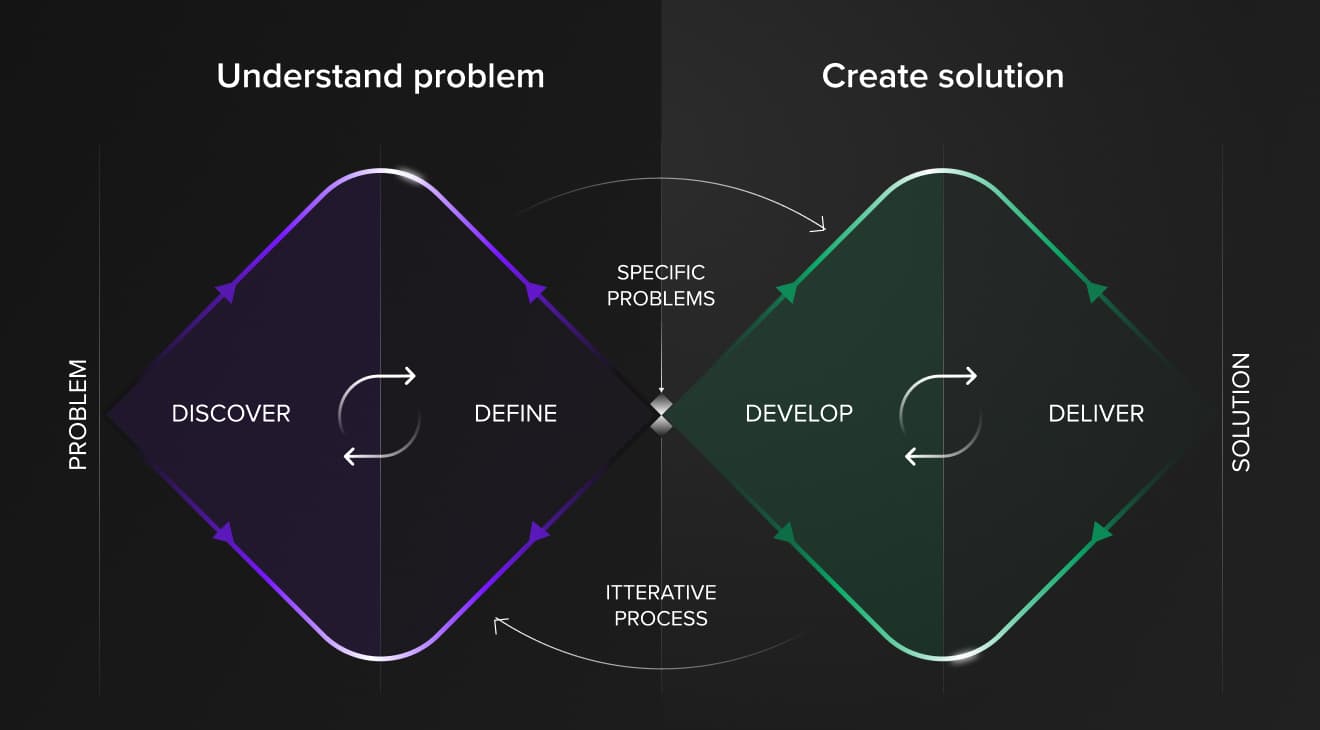
Who are the facilitators of a Design Thinking movement?
Within any enterprise, the facilitators behind any design approach can be found to operate at three levels:
- Individual: At the most basic level, the Design Thinking framework can be executed on a personal level. The way you approach a project or how you interact with coworkers and management can be transformed by following a strategic design methodology.
- Department/Team: These facilitators require breaking through the age-old silo mentality, or the unwillingness to share information with different teams, to encourage optimum cross-disciplinary collaboration. In order to truly grasp the power of Design Thinking, it’s essential to communicate with multiple people within the department as well as stakeholders from different teams and with the end users.
- Enterprise: The final level to facilitate a design approach comes from the decision-makers or C-level executives. They often don’t focus as much on the details to facilitate a design approach, but instead, look at how they can implement organizational strategies across departmental lines. Since every department often follows its own KPIs, there can be conflicting interests among the various teams. From this perspective, the best way to leverage Design Thinking is to use it as a framework for digital strategy.
Regardless of which facilitator is leading the way, enterprise Design Thinking can serve as a common language throughout any company. When teams and management better understand the many intricate cross-sector processes and how they benefit each other, and when they build up an internal language, there will be less misalignments and overall operations will run more smoothly.

What are the key drivers and components of enterprise Design Thinking?
The key driver behind this methodology is building an overall corporate culture rooted in Design Thinking. This requires creating an environment where interdisciplinary teams working together in the same room becomes the expected norm. With this as a foundation, there are four additional components to always keep in mind:
- Stay relevant to the end-users whatever the cost. From deep ethnographic interview techniques to customer decision journeys, use the power of empathy to keep up with those who need the product or service most.
- Appeal to all the senses. By connecting research with intuition, or a gut feeling, uncertain concepts can lead to cutting-edge opportunities. Just make sure it makes sense and connects with the right people.
- Work fast, fail early. Instead of striving for 100% certainty from the start, work quickly and invest less to develop and test basic prototypes. With an iterative methodology, mistakes are less costly and better prototypes can be designed using all previously gained knowledge.
- Use visual methods to encourage broad stakeholder buy-in. From storyboards and concept maps to short videos, visual thinking is one of the best ways to build a shared language and get all the various teams on the same page.
These main drivers, also known as Design Thinking’s four governing principles, are examined in more detail in a recent piece written by Christopher Scales, Star’s Director of Strategy & Insight. We trust and adhere to them for any problem-solving process, and they provide a strategic universal framework that can be customized to evolving business needs and overall vision.
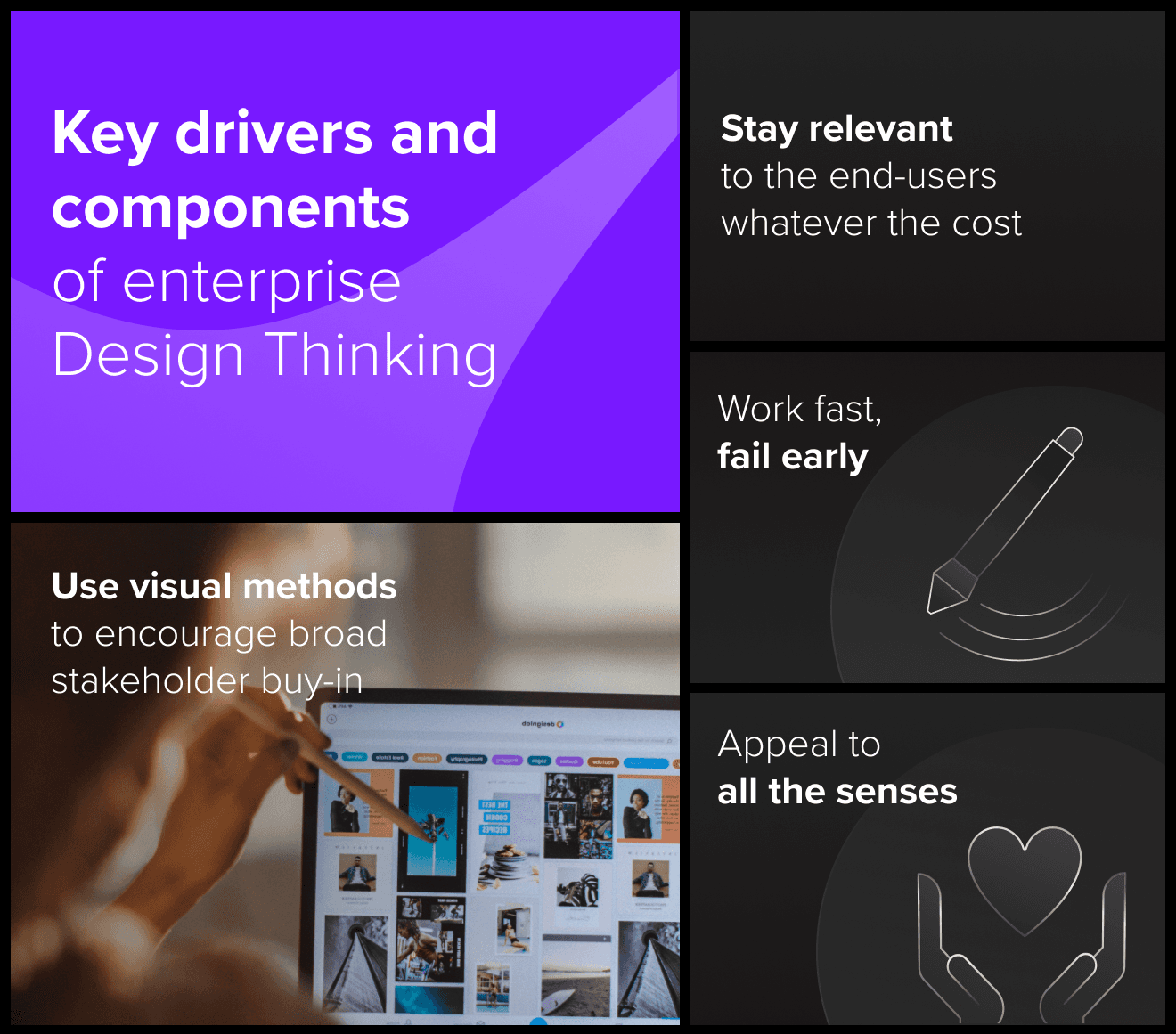
What are the challenges and benefits of the Design Thinking framework in enterprise?
Let’s bring to life both the challenges and benefits of Design Thinking with an example from our partnership with Tweddle Group, a long-established company previously focused on printing car manuals.
In 2010, Tweddle Group decided that it was time to bring a mostly print business into the digital age with a grand vision to become the leading supplier of digital owner information and diagnostic products for OEMs worldwide. The initial challenges were well-defined: scale and reduce internal costs, optimize operational reality and remove inefficient legacy systems. The overall goal: create a web-based app aimed at improving the quality and efficiency of diagnostic services throughout the automotive industry.
From the very start, we worked to tackle all project and enterprise-level challenges using a design approach similar to the Double Diamond. For the Discover phase, a collaborative session was held to introduce all team members and company stakeholders as well as explore existing materials and the current state of the product. This was followed by our UX/UI designer interviewing users on-site to validate findings, getting familiar with the technicians and fully understanding the problem. Overall, we wanted to use empathy to bring as many stakeholders together and aggregate as much information using transparent methods.
These activities were essential as we moved into the Define phase. With a deep understanding of the business and user needs, we were ready to start ideation with continued group-oriented activities on-site. Workshop activities created multiple concepts for the app, whiteboard discussions created the information architecture for the platform and screen sketches led to the first validations of the app concept with technician users. In this step, all the findings and information gathered was synthesized to prepare for product development.
We then kicked off the Develop phase, meaning it was UX/UI design time. We skillfully extended the design concept with visual design elaboration, interactive prototyping and finally specifications for a new product.
Once the final Deliver phase arrived, Tweddle and Star couldn’t have been prouder of the results. For a company that not too long ago was fully non-digital, the transformation was remarkable:
- New major revenue streams were derived from digital solutions
- Fresh revenue streams were unlocked by moving to digital solutions offering rich and reliable data for automakers
- Operational efficiency skyrocketed by retiring outdated legacy infrastructure and introducing new content management tools with simple workflows and bigger automation
Implementing the Design Thinking framework was pivotal in creating digital solutions for a company that sold exclusively print-based products for more than 50 years. This demonstrates the groundbreaking results that it can bring to any enterprise, and that’s why we integrate it into every project we do at Star.

Tweddle case study
Dig deeper into our transformative Design Thinking approach with Tweddle.
How can you measure the design thinking impact on your business?
While measuring the value of design is challenging, both academics and analysts have found ways to do it with compelling results. The Design Management Institute study that measured the impact of Design Thinking on S&P companies, mentioned in the introduction, examined the impact of their investments in design on stock value over a ten-year period. This research analyzed design-obsessed companies from Nike and Walt Disney to Apple.
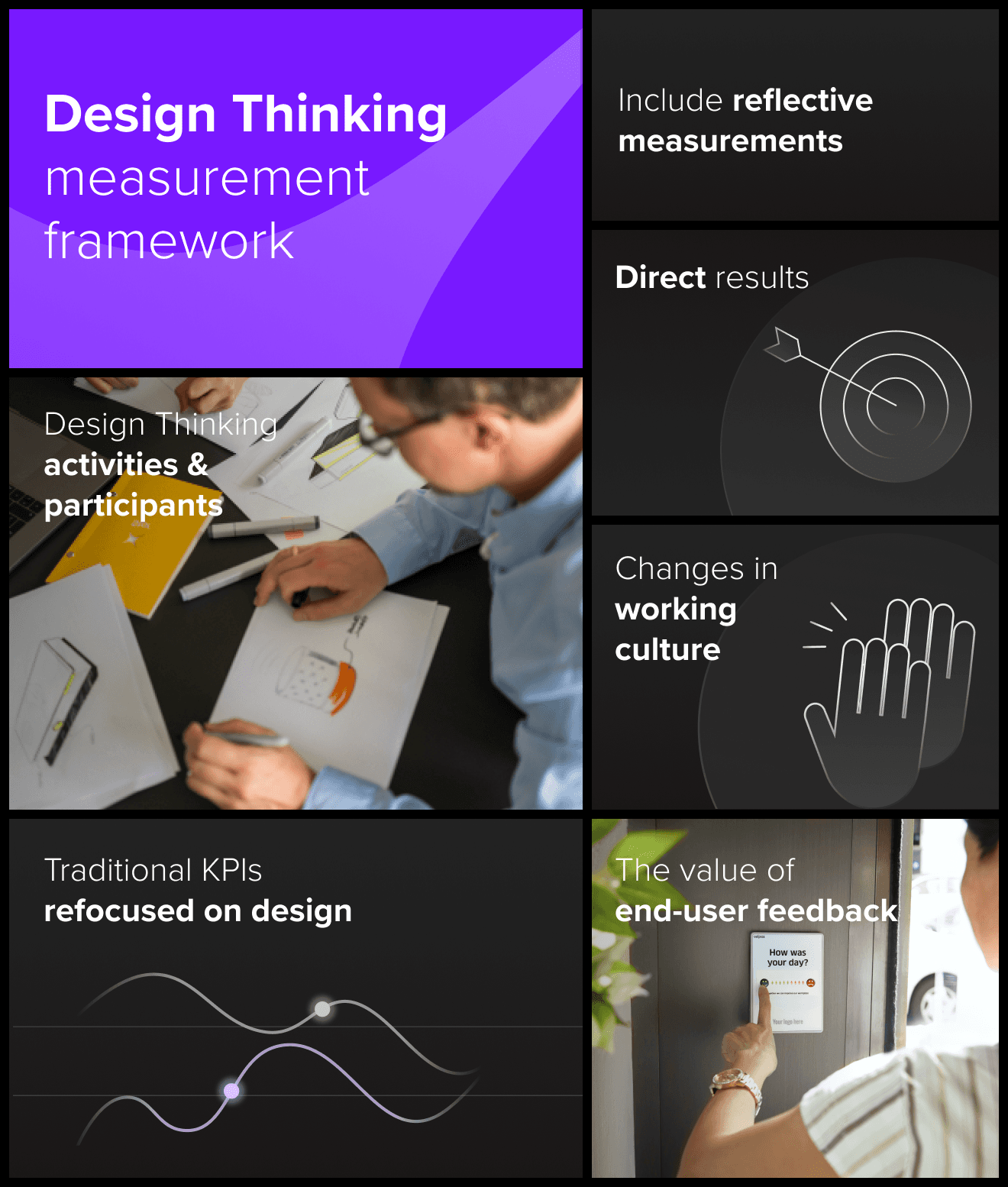
For many others, the main point of interest is the link between enterprise Design Thinking and a company’s return on investment (ROI). The Hasso Plattner Institute of Design at Stanford, a global leader in teaching Design Thinking methodology, published a paper in 2015 that gives a list of criteria that can be used as a measurement framework when looking at enterprise design and ROI. The core principles they include are:
- Traditional KPIs refocused on design. Use typical elements like market success, fiscal performance and revenue outcome when looking at Design Thinking projects.
- The value of end-user feedback. Take detailed reports from customers after using the product or service to measure their level of satisfaction.
- Design Thinking activities and participants. Keep tabs of both to better understand the before and after results.
- Include reflective measurements. From customers to employees, utilize surveys and questionnaires completed both internally and externally by everyone involved in the Design Thinking processes.
- Changes in working culture. Look at the impact of the design approach inside your business by units including team collaboration, engagement and motivation.
- Direct results. Take count of all the projects created and executed as a result of Design Thinking sessions.
While this gives a customizable framework for individual companies, a more recent study found that a mature Design Thinking model can deliver an ROI between 71% and 107% at the enterprise level. We’ve come a long way from the “perceived” value of enterprise Design Thinking to quantifiable data that overwhelmingly supports the added benefit from embracing this framework.
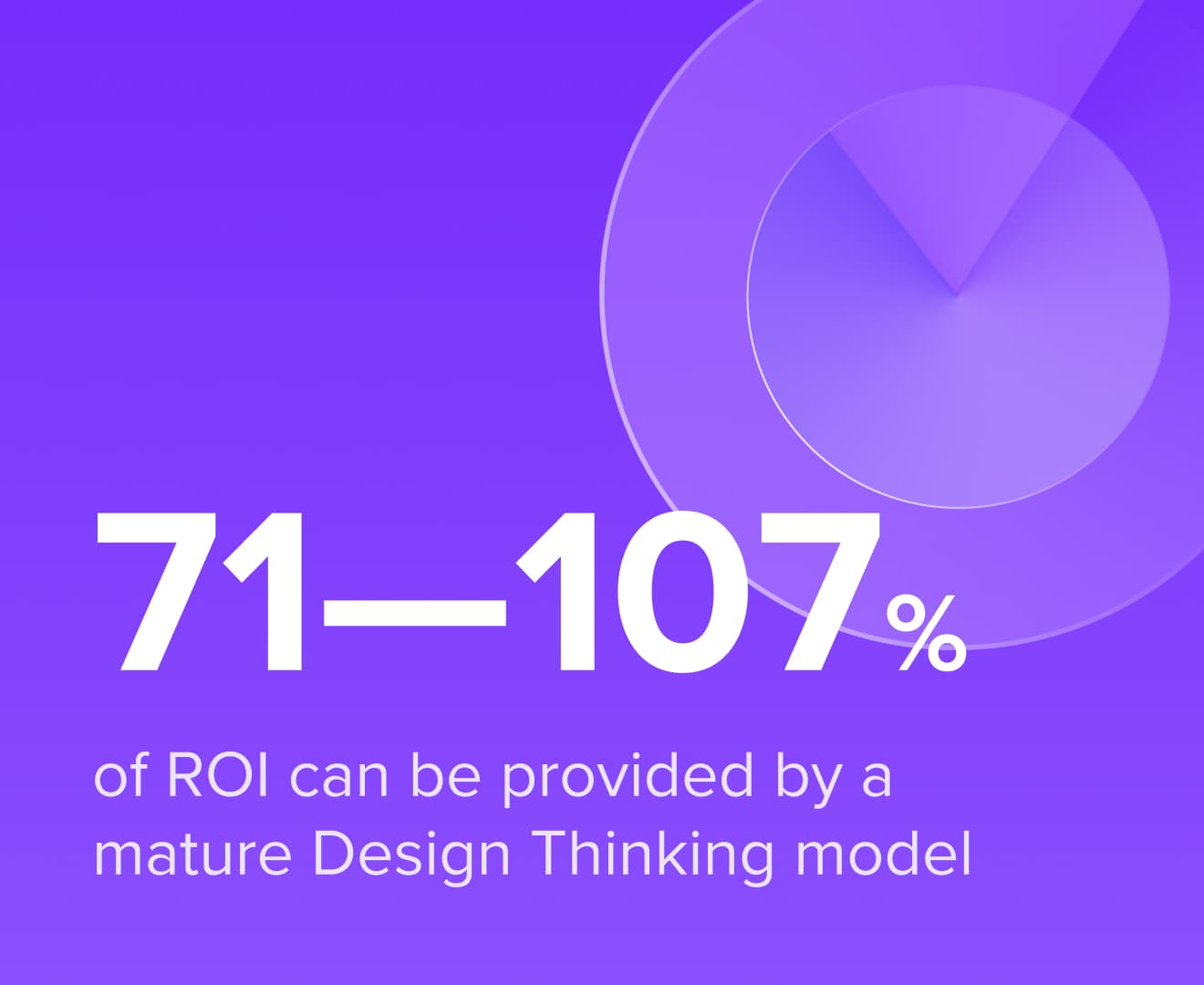
Key takeaways to remember for enterprise Design Thinking
- Design Thinking is a powerful problem-solving framework that should be implemented for any enterprise – big or small, old or new.
- It’s not exclusive to designers. This approach benefits all functions from decision-makers and supply chain to product development, marketing and end-users.
- While there are many different design models, the Double Diamond and its four phases – Discover, Define, Develop and Deliver – offer a basic framework that can be customized and iterated based on specific company needs.
- Facilitators of Design Thinking exist at three levels – Individual, Department and Enterprise – and the main goal should always be to find ways to create a common language that fosters cross-disciplinary collaboration.
- The added value of enterprise Design Thinking is massive. Whether you look at stock value or ROI indicators, study after study proves that the financial and structural returns are well worth the investment.
- As you implement a Design Thinking methodology, remember to stay ever-relevant to your end-users, appeal to both intellect and intuition, work quickly and use as many visual techniques as possible.
- And finally, mastering Design Thinking is a lifelong pursuit. Further practice and mentorship must always be a company-wide priority.


